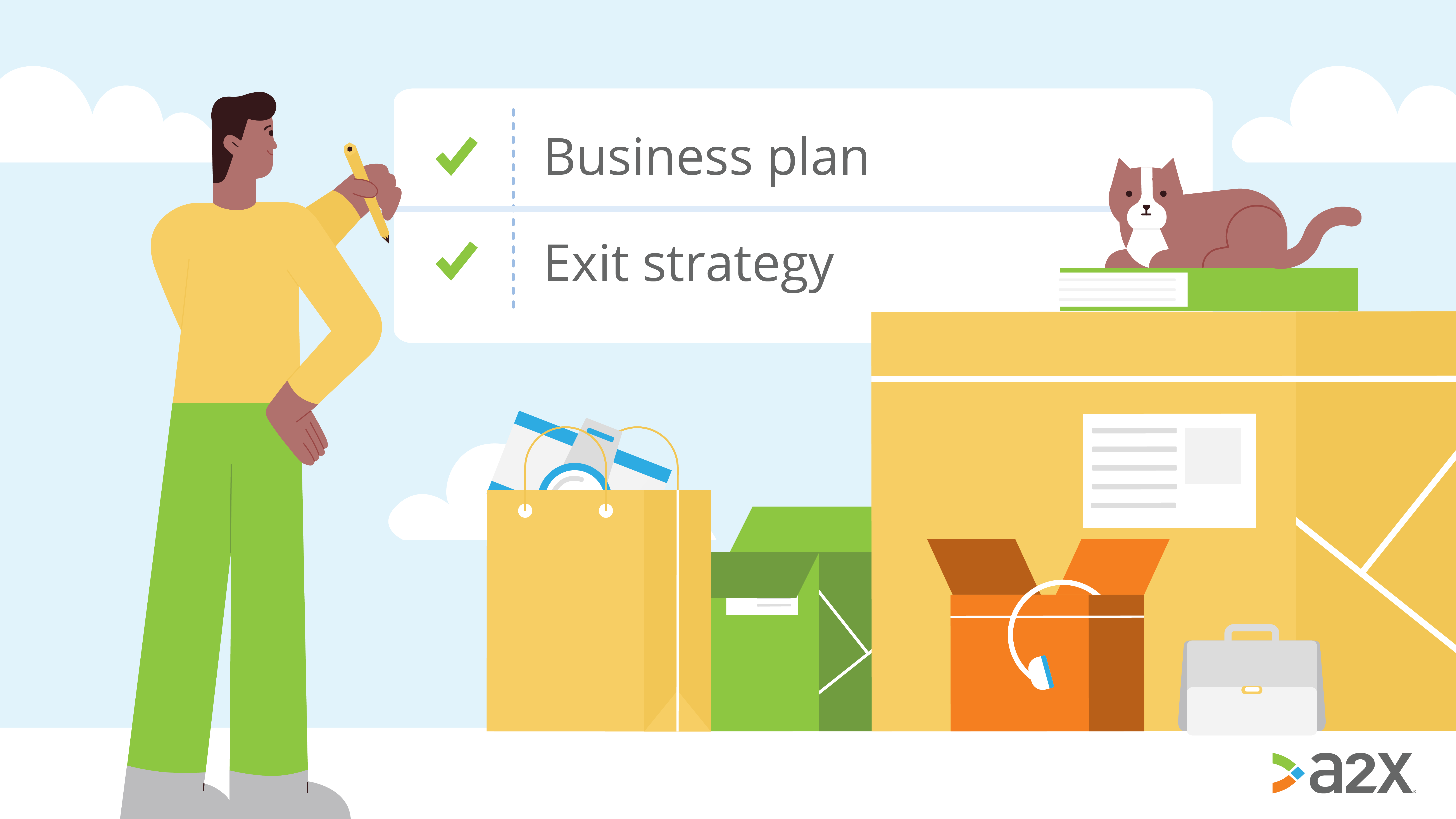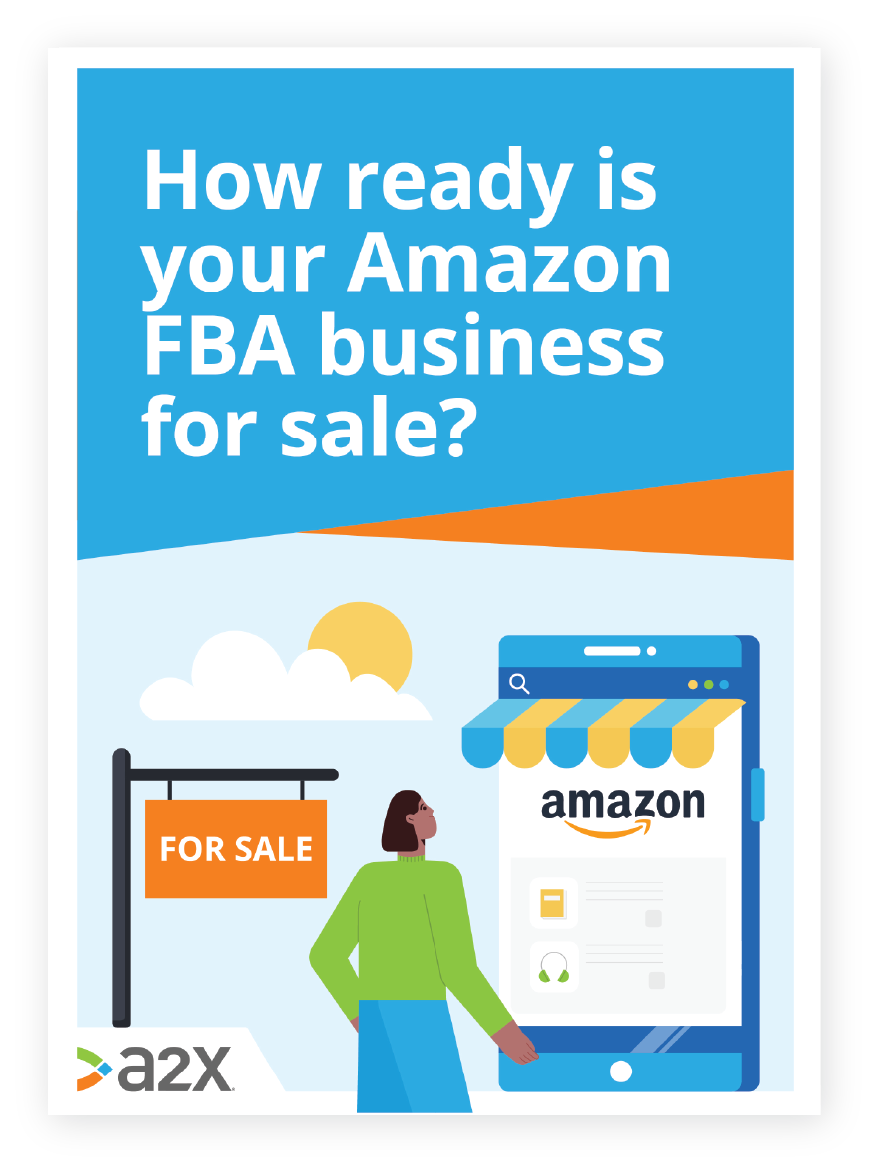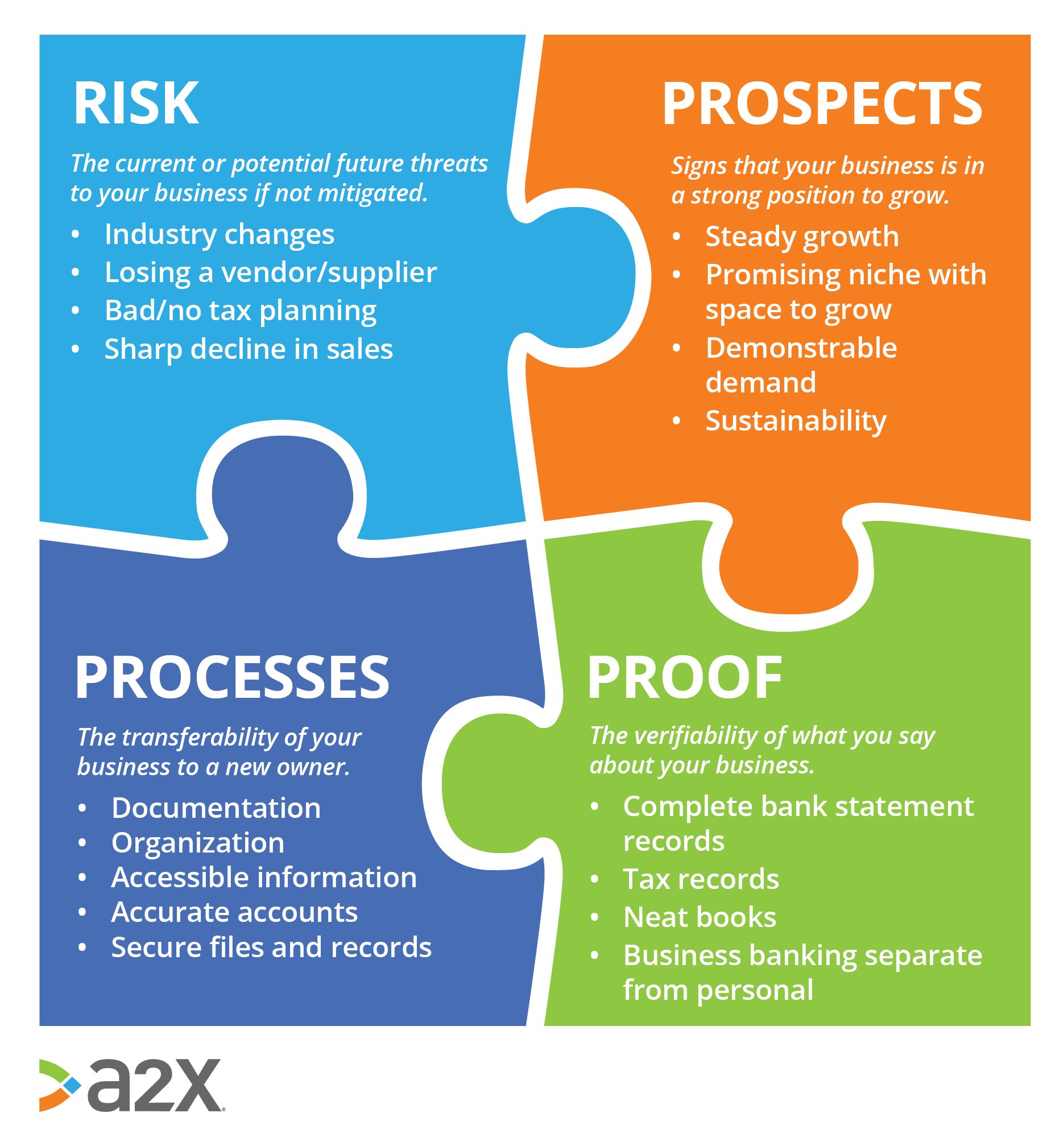
Business Exit Plans: Why You Need One and How to Create It
Wondering whether now is the right time to sell your business? Use our free assessment tool to figure out how to get the best value and whether you need to do more now to get more later. Download it free here.
“Ideally, an entrepreneur will develop an exit strategy in their initial business plan before actually going into business.”
Are you feeling validated by that quote or a little panicky?
Whether you’re at the start of your ecommerce business journey, or nearing the end, this guide is for you.
It will cover business exit plans and strategy, the steps involved, and how to get the best value for your business when it comes time to walk away.
In this guide to exit planning for ecommerce businesses:
Table of Contents
Is now the best time to sell your Amazon FBA business?
How attractive would your business be to buyers? Are there things you could do to increase its value? Find out with our free assessment tool.
Download our free guide
What is exit planning?
Exit planning involves designing a roadmap for leaving your business. You might be closing up shop for good, or selling to a new owner.
By having a strategy in place ahead of time, you give yourself options. The earlier you do it, the better.
You can work to increase the value of your business throughout its life, and limit any losses.
Sounds smart, right?
Well, it pays off.
“Using an exit strategy, I was able to increase the value of my first business from $25,000 to $165,000 in the space of 12-14 months.”
- Mark Daoust, CEO of QuietLight Brokerage for Forbes.
6 benefits of a business exit plan:
-
You have a roadmap for transitioning your business when you want to close or sell up.
-
You can use it to make informed decisions from the beginning, with an end goal in mind.
-
If you need to close or sell up quickly, you have a strategy in place.
-
You protect the value of your business and will more easily spot mediocre offers.
-
You make the transfer easier and smoother for buyers, which could fetch a higher price.
-
You’ll be able to better judge when to sell your business. And timing is everything.
When we created our guide to selling an FBA business, we reached out to a number of our expert ecommerce accountants and other pros in the ecommerce business selling space.
One tip came up time and again across the board.
Have an exit strategy in place.
Exit planning strategies
Your business is only worth what a buyer will pay.
You can influence that. But it could take months or years, which is why business exit planning should come early on.
Ideally you want to align your growth strategy with your exit strategy.
When strategizing growth, a business owner looks at their valuation drivers.
These might include expanding their business model, increasing traffic, and optimizing and automating business operations.
Ultimately, they all come under four key pillars:
-
Risk: Current or future threats that should be mitigated.
-
Prospects: Opportunities for growth that should be investigated and maximized.
-
Processes: Recording and documenting everything that helps your business run.
-
Proof: Neat, complete records that can be used to verify information about your business.

These same pillars should be used to frame your exit strategy.
Why?
Because they all contribute to a high value, sellable, and sustainable business.
The exit planning process: optimization
A business exit plan is more of a process.
You work on your business to make it the best that it can be, so that if and when the time comes to leave it, you get the best deal.
The first thing you need to do in the journey is find the weakest link in your business’ chain.
(This is if your business is already running, of course. If not, read on, and make notes for what can be done now and later.)
Then you can decide whether to sell up or close up, and how.
1. Identify your business’ greatest weakness
Imagine you are selling your business now.
Looking at the four pillars discussed above, what dealbreakers do you think might come up?
What could put a buyer off immediately?
Here are some examples:
-
Your business is less than 12-18 months old. It’s difficult to defend a young business as you don’t have historical records to back up any claims about future performance.
-
Your industry has a bad or declining reputation. Perhaps some new research has come out that isn’t favorable to the products you’re selling.
-
Your products are commonly available elsewhere and you don’t own the brand. This doesn’t make for a defensible business, and it will be more difficult to attract buyers.
-
You’ve made a few errors in your accounts which are hidden away. In the sales process, buyers will want to see all your records as part of their due diligence.
-
Your business processes are all in your head. A buyer will want a smooth transition which means easy to find and understand processes, neatly documented and up-to-date.
These are just a few things that can put buyers off.
And you can change them.
Our guide to selling your FBA business goes into more of them in greater detail. Use this to help identify your weakest link and turn it around.
2. Identify areas to optimize
Once you know the weaker areas of your business, you can look for opportunities to strengthen them.
From your sales channel to the products you sell, your listings, prices, accounts, operations, staff, suppliers, and fulfilment method - all these areas can be improved.
Improvement might mean automation.
It might mean re-evaluating current practice and changing how things are done.
It might simply mean writing things down so tasks are performed consistently every time.
Regardless, you’ll get a more efficient, resilient business. And they’re the ones that sell for top-dollar down the road.
Here are some examples of areas and ways to optimize:
-
Create Standard Operating Procedures (SOPs) for your business. These lay out how you operate and why so that anyone can understand and implement them.
-
Track how you spend time in your business. How much of your time is customer service, accounting, product research etc? This will help you pinpoint inefficiency, and identify areas to automate.
-
Automate the parts of your business that you don’t need to handle manually. For example, if you don’t use A2X, it’s likely that you or your accountant is spending hours manually reconciling transactions.
You don’t need to do this. Apps can do it accurately in minutes, so take advantage.
- Look at your store’s SEO. You have an online business, so understanding Search Engine Optimization and what it means to your visibility is crucial. Even if you’re selling on Amazon, SEO still plays a part in how people find you.
Use Google Analytics to measure your efforts and keep adjusting over time.
- Ask your suppliers for better deals. If your order volumes have increased or expanded across different product lines, renegotiate terms. This is common and can save you significantly.
Make a list, and don’t panic.
You can’t (and shouldn’t) do them all at once.
3. Prioritize and value those optimizations
Once you have a list of areas to optimize, you need to pick which ones to do when.
To do this, you’ll want to compare each area by:
-
Ease of implementation
-
Cost to implement
-
Value of implementing
Which will pack the biggest punch?
That’s where your efforts should be focused first.
In general, you want to make sure the lifeblood of your business is managed optimally before anything else. And that’s the money.
What is your accounting like?
Here’s what integrating A2X would look like as an example:
Ease | Cost | Value |
You can be setup in just a few minutes. Books can be backdated so that your records are consistent from day one. | Plans then start at $19/mo and increase by order volume. There are plans for multi-channel businesses too. | Saves you hours on your accounts each month that you can spend doing other things. Gives you accurate financials that you can use to make strategic business decisions, forecast, and protect yourself. Gives you peace of mind that a crucial part of your accounting is done right. Gives you proof of a resilient, efficient business should you choose to sell in the future. |
This one action has a positive impact across your business.
Start here.
4. Set milestones and implement those optimizations
Once you have a handle on which changes will have the greatest gains, give yourself some deadlines.
It’s ok if they change. (Unless you want to sell up ASAP. In which case, you’d better get a move on!)
Having a framework with dates in place should encourage you to make the progress needed.
This part of your exit strategy focuses on strengthening your business so as an offering, it’s the best it can be.
The next part of your strategy looks at the practical steps.
The exit planning process: preparation
Even if these things have to change later, it’s good to know all your options.
Here’s an overview of them.
Closing up vs. selling up
If you close up, you don’t need to worry about making your business attractive to buyers. You can run it until you’ve had enough, take your money, and go.
If you want to sell, you have more work to do.
If you’re selling, think about your preferences for who, how, and when
There are a lot of steps involved in selling a business.
And there are different types of buyer too.
You might have interest from corporates, aggregators, or individuals. And with the latter, you have a few options when it comes to your exit plan.
You can keep some skin in the game if you want to.
It’s common for sellers to allow individual buyers to pay for a business over time.
During this transitional period:
-
You keep a stake and continue to make a cut while the buyer takes on the heavy lifting.
-
You will be available to help the buyer for an agreed-upon period of time.
-
This slower transition should make things smoother and less stressful across the board.
Alternatively, you might prefer a cleaner, swifter break.
In which case, an aggregator or corporate may be the way to go.
Unfortunately, you won’t have much control over which buyers are interested in your business.
You can influence this somewhat through your valuation drivers, but it’s best to be prepared for any eventuality.
If you’re closing, think about how and when
You could shut up shop and sell everything quickly.
But you might not get the best deal that way.
You have the option to liquidate your business over time, paying yourself until the cash in your business runs out.
Stakeholders and employees won’t be too pleased, but if you have neither, you’re winning.
The downside is that if you suddenly change your mind and want to sell, your business’ growth is stunted and you might fetch a lower price.
When closing your business, remember to:
-
File business dissolution documents.
-
Cancel all your business expenses (don’t forget sales channel subscriptions or app subscriptions).
-
If you have employees, check that you follow the federal and state labor laws.
-
File your final taxes and make sure you retain the records for as long as required by law (usually up to 7 years).
And finally, document the process you’ll take
Once you’ve made a few decisions, map them out.
Who will you need to contact?
What will you need to cancel?
What will you keep, destroy, or pass onto a new owner?
The more instructions you can create now, the easier the ride will be if you’re suddenly under pressure later.
Make things easy for yourself.
Good luck!
Is your business ready to sell?
Whether you’re looking to sell your business now or in the future, timing is everything.
It could add another zero to the value of your sale.
We’ve created a free assessment tool for ecommerce sellers to find out if they could be getting more for their business. And if so, how.
Is now the best time to sell your Amazon FBA business?
How attractive would your business be to buyers? Are there things you could do to increase its value? Find out with our free assessment tool.
Download our free guide

